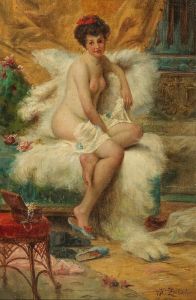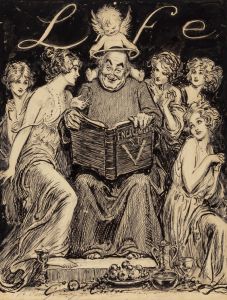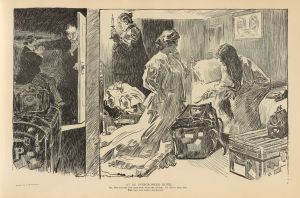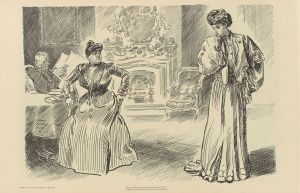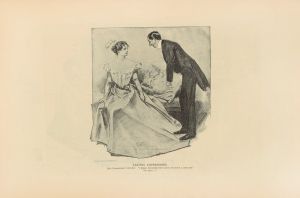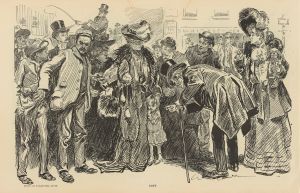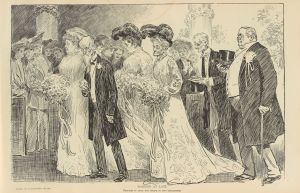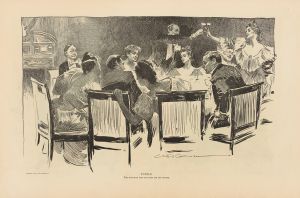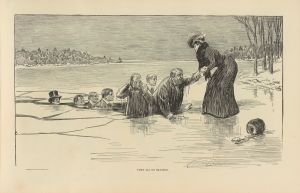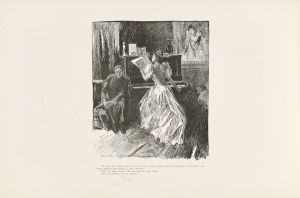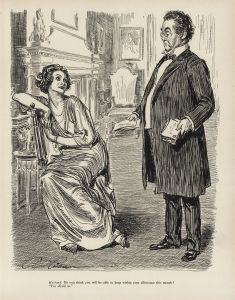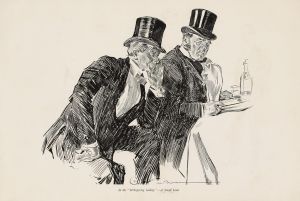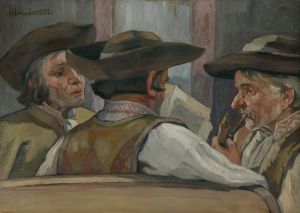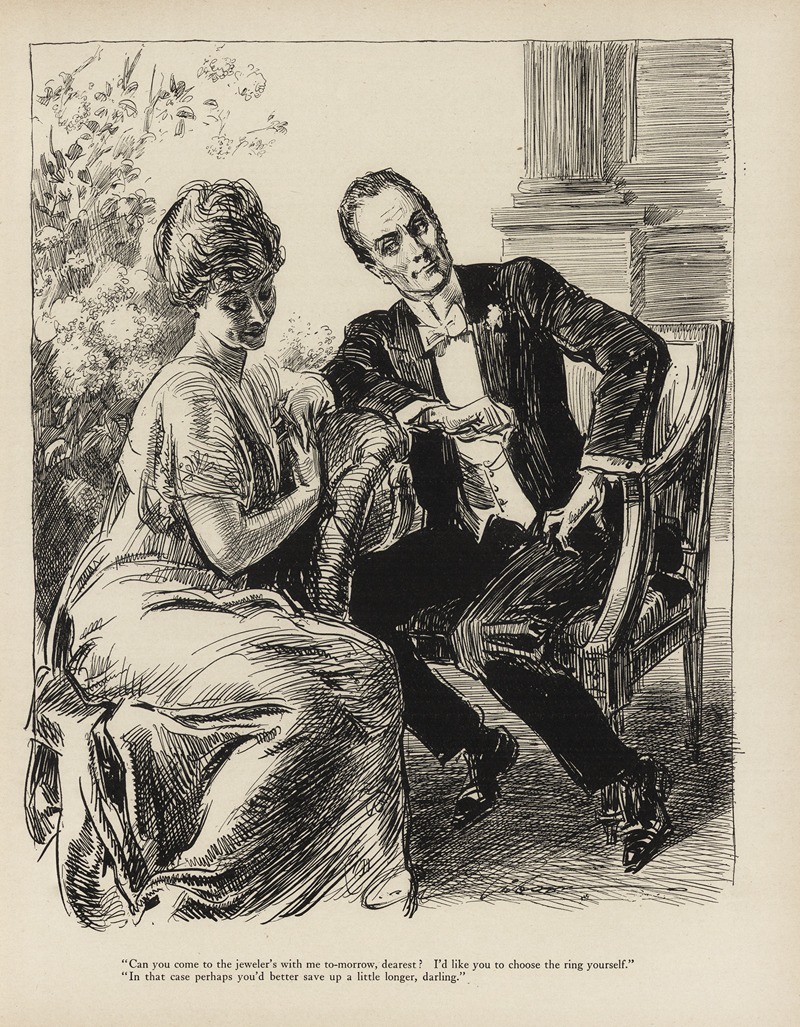
‘Can you come to the Jeweller’s with me to-morrow. dearest’
A hand-painted replica of Charles Dana Gibson’s masterpiece ‘Can you come to the Jeweller’s with me to-morrow. dearest’, meticulously crafted by professional artists to capture the true essence of the original. Each piece is created with museum-quality canvas and rare mineral pigments, carefully painted by experienced artists with delicate brushstrokes and rich, layered colors to perfectly recreate the texture of the original artwork. Unlike machine-printed reproductions, this hand-painted version brings the painting to life, infused with the artist’s emotions and skill in every stroke. Whether for personal collection or home decoration, it instantly elevates the artistic atmosphere of any space.
Charles Dana Gibson was an influential American illustrator, best known for his creation of the "Gibson Girl," an iconic representation of the American woman at the turn of the 20th century. His work captured the spirit and style of the era, often depicting scenes of social life and the evolving roles of women in society. One of his notable illustrations is titled "Can you come to the Jeweller’s with me to-morrow, dearest."
This illustration, like many of Gibson's works, reflects the social dynamics and cultural norms of the early 1900s. The scene typically features elegantly dressed individuals, often highlighting the fashion and manners of the upper-middle class. Gibson's illustrations were known for their detailed line work and the ability to convey subtle social commentary through the interactions of his characters.
"Can you come to the Jeweller’s with me to-morrow, dearest" likely portrays a moment of social interaction, possibly involving themes of courtship or consumer culture, which were common in Gibson's work. His illustrations often depicted women as confident and independent, yet still engaged in traditional social roles, reflecting the transitional period for women during this time.
Gibson's work was widely published in magazines such as Life, Harper's Weekly, and Scribner's, making his illustrations highly influential in shaping public perceptions of gender and class. The "Gibson Girl" became a cultural phenomenon, representing the idealized American woman who was both fashionable and assertive. This image played a significant role in the visual culture of the United States during the late 19th and early 20th centuries.
While specific details about the context or inspiration for "Can you come to the Jeweller’s with me to-morrow, dearest" are not extensively documented, it fits within Gibson's broader oeuvre that often explored themes of romance, social interaction, and the changing roles of women. His work remains a valuable resource for understanding the cultural and social history of the period.
Gibson's legacy as an illustrator is marked by his ability to capture the essence of his time with humor and insight. His illustrations continue to be studied for their artistic merit and their reflection of the societal changes occurring during his lifetime. Although the specific narrative of this particular illustration may not be fully detailed in historical records, it remains a part of Gibson's influential body of work that contributed to the visual and cultural landscape of his era.





